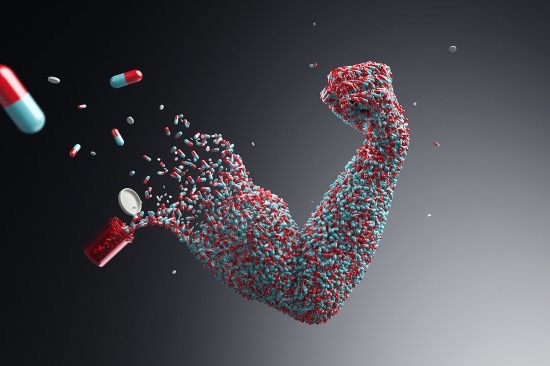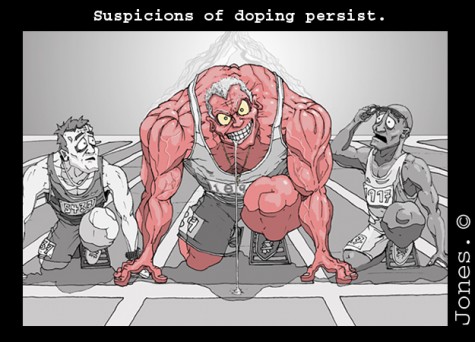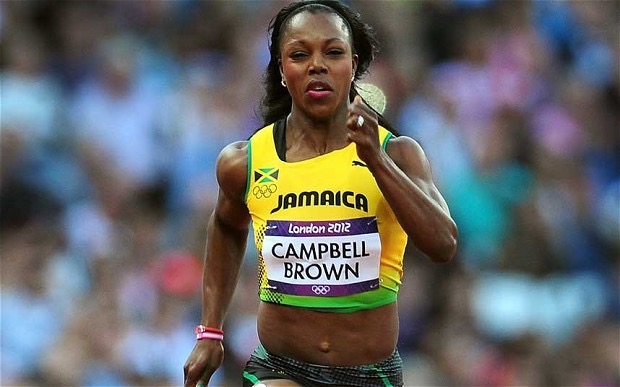Doping and Deception

http://www.viaframe.de/blog/wp-content/uploads/2013/03/2013-02-05_Doping_1500px_srgb-550×366.jpg
The world of athletics is no longer clean and fair; doping to artificially enhance one’s performance and the deception that athletes hide behind cannot be overlooked. For example, at the Beijing Olympics in 2008, Jamaican athletes executed a clean sweep of the 100m dash. Four years later in London, they repeated the feat. But Jamaica has had eight positive drug cases this year and even more concerning, the entire board of the Jamaican Anti-Doping Commission has resigned. (http://www.dailymail.co.uk/
Furthermore, the history over doping may give insight into the destruction doping has caused to clean competition. The word doping derives from the Dutch word dop, an alcoholic beverage made of grape skins, and was used by Zulu warriors in order to enhance their prowess in battle. (https://www.wada-ama.org) The use of illegal substances to improve performances has been used since the beginning of competitive sport itself. Even though the actual substances have been altered through gains in the scientific area, the basic ideas are still very similar.

What can an athlete take in order to become a better version of his or herself? Raw eggs, caffeine, cocaine, strychnine and artificial injections were just the beginning of a lifelong battle against athlete, coach, and corruption. In 1928, the IAAF (athletics) became the first International Sport Federation (IF) to ban doping, the use of stimulating substances. Many others followed, but restrictions remained ineffective because no tests were administered. (https://www.wada-ama.org) In 1966, UCI (cycling) and FIFA (football/soccer) were the first organizations to introduce drug testing in their respective world championships. A year later, the IOC (International Olympic Committee), followed suit.
With all the new restrictions put in place, athletes began to blood dope. Blood doping increases oxygen-carrying haemoglobin by removing and re-infusing an athletes blood. This practice was widely used to gain the upper hand in the first years until it, too, was banned in 1986. After the IOC caught onto blood doping, athletes began using erythropoietin as a way to increase haemoglobin. This continued for some time because a reliable way of testing the use of erythropoietin wasn’t created until the 2000 Olympic Games in Sydney.
The athletic community decided that a world-wide organization, free of any ties to one sport, was needed in order to prevent widespread cheating. In 1999, the World Anti-Doping Agency (WADA) was established and became the spearhead against cheating. Even with all the people fighting for clean competition, corruption is still rampant and the number of athletes cheating is overwhelming. Cycling, weightlifting, swimming, track and field, and triathlon are just a few of the sports that are most prone to cheating. The most grueling, individual sports are the sorts where cheating is seen the most because, at the end of the day, their performance is completely them. That doesn’t mean that team sports don’t see doping as well. In fact, hockey has seen a large rise in positive test results.
The corruption that surrounds sports needs to be dealt with; anyone caught cheating needs to be taught a lesson. With world records being set by cheaters, how do the clean athletes stand a chance? Too many athletes get served a small suspension without any real consequence. It’s no wonder that more people are turning to cheating, because once you reach a certain tipping point in a sport, the next level, for many, is doping. With WADA tracking down cheaters and providing more efficient testing, doping is in decline, however, we will not see clean competition for a long time because, unfortunately, the will to win overwhelms a good conscious.

I am currently a Senior at Air Academy High School and Senior Sports Editor of the Jetsream Journal. I kinda like math and sometimes I run, a lot. I eat...



